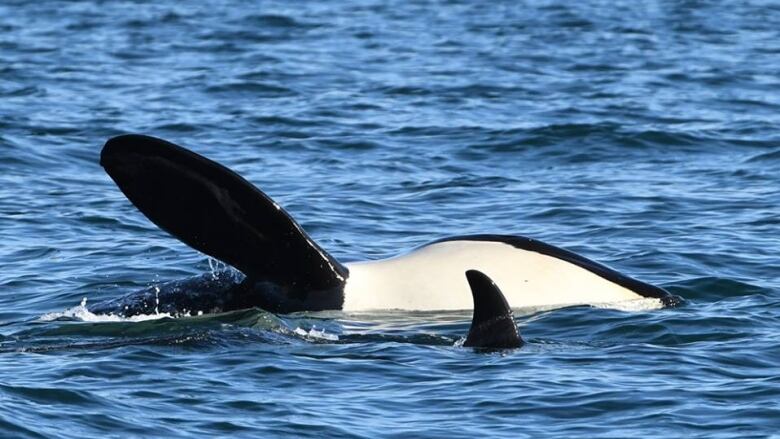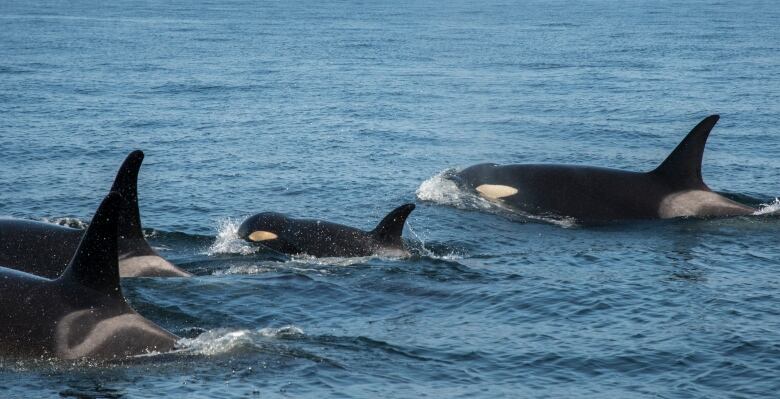Hopes rise as endangered 'grandmother' killer whale is spotted alive
42-year-old J17 is a member of B.C.'s endangered southern resident killer whale population

A matriarch killer whale thought to be on the brink of starving to death has resurfacedin B.C. waters, spurringcautious hope amonglocal researchers.
J17, a member of the J pod family and B.C.'s endangered southern resident killer whale population,was spotted in coastal waters looking healthier than when she was last spotted in the fall.
Martin Haulena, the head veterinarian for the Vancouver Aquarium Marine Science Centre, said the orca looks better from observationsat sea-level, but stressed more information mustbe gathered to get a clearer picture of her condition.
"Certainly that observational data is very, very important and certainly it's good news," Haulena said. "But I think we need some corroboration on that."
Signs of starvation
Last fall, researchers said the 42-year-old whale was showing signs of starvation, sporting a so-called peanut head. That's a condition where fat stores in the whale dwindle so much that the typical roundness of the whale's head becomes sunken and misshapenlike a peanut in shell.
The podsuffered a difficult summer whena newborn calf anda three-year-old whale died. The deaths brought the total number of southern resident killer whales down to74, a 35-year-low.

The loss ofJ17, an elderly matriarch and grandmother,would have been devastating.
"For these animals,those matriarchs are very, very important," Haulena said.
"They're important for cultural reasons, for passing on knowledge to younger animals. They're the leaders in their pods and and even more directly, they often do a lot of food sharing with the younger offspring."
'Very, very valuable'
Haulenasuspects that the family of whales spent the winter along the outer coast and could have travelled as far south as California in search of salmon, their preferred food source.
"The salmon stocks all the way up and down our coast from California up to B.C. are also incredibly important for this group of animal," he said.
In the meantime, Haulena is working with other researchers from the Centre for Whale Research and the National Oceanic and Atmospheric Administrationto develop a contingency plan to help animals who are in distress, consolidate different tools available, and share data.
"There aren't too many of these guys left. We don't seem to be getting more. We seem to be getting less as time progresses and every individual is very, very valuable."
Listen to Martin Haulena's interview on All Points West:
With files from All Points West












_(720p).jpg)


 OFFICIAL HD MUSIC VIDEO.jpg)
.jpg)



























































































